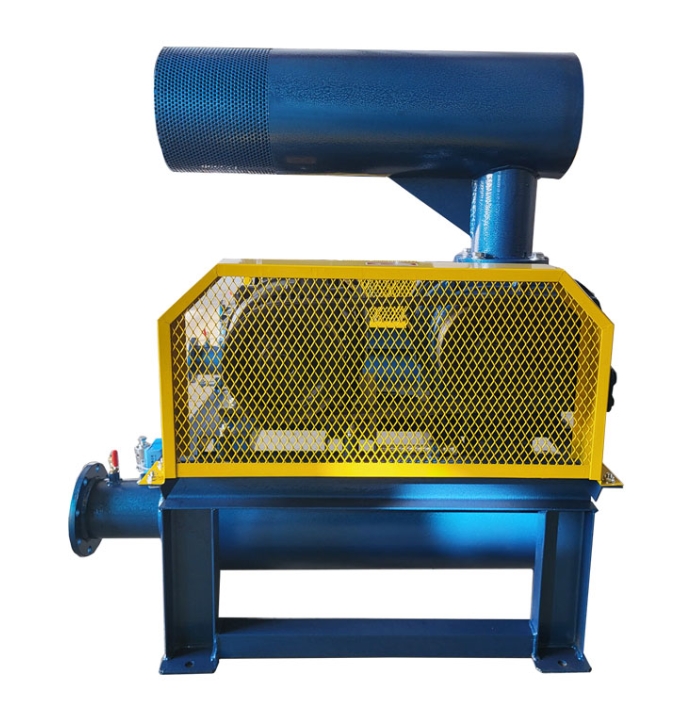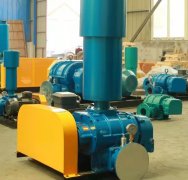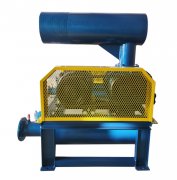Detailed explanation of parameters for Roots blower 150 model
The Roots blower 150 model is a commonly used specification for medium-sized blowers in industrial production, and its parameter settings directly affect the performance and applicability of the equipment. Understanding the specific meanings and interrelationships of these parameters can help users select and use equipment correctly, ensuring stable system operation.
Basic performance parameters
The main parameters of the 150 model Roots blower include core indicators such as air volume, pressure, power, and speed. The air volume parameter is usually within the range of 15-30 cubic meters per minute, and the specific value depends on the speed and system design. In terms of pressure capacity, the standard model's working pressure can reach 58.8kPa, and the special design can reach 98kPa. The power of the supporting motor is generally selected between 15-45 kilowatts according to the air volume and pressure requirements.
The speed parameter directly affects the air output and service life of the equipment. The standard speed design is within the range of 1000-1500 revolutions per minute, using high-quality bearings and precision gear transmission to ensure smooth and reliable operation. The equipment noise is controlled within a reasonable range, and the noise level meets environmental requirements by optimizing the rotor profile and installing mufflers.
Structural parameter characteristics
The inlet diameter of this model of fan is standard 150mm, and it adopts flange connection method for easy pipeline installation. The equipment has a compact structure, occupies a reasonable area, and is easy to arrange in the workshop. The rotor is made of high-strength cast iron material, which has been precision machined and dynamically balanced to ensure long-term stable operation.
The transmission system can choose between direct or belt transmission as needed. Direct transmission has high efficiency and compact structure; Belt transmission is easy to adjust the speed and has strong adaptability. The bearing system adopts a heavy-duty design, and the lubrication method can choose splash lubrication or forced lubrication to meet the needs of different working conditions.
Application performance
In practical applications, the 150 model Roots blower exhibits excellent performance characteristics. Stable air output, unaffected by pressure fluctuations, suitable for processes that require constant airflow. The pressure adaptive feature enables the equipment to automatically adjust to adapt to changes in system resistance. The efficiency curve is flat and maintains a high rate over a wide operating range.
This model of equipment is particularly suitable for medium-sized industrial applications. In the field of sewage treatment, it can be used for aeration systems with a daily processing capacity of tens of thousands of tons; In pneumatic conveying systems, it can meet the demand for medium conveying volume; In the metallurgical and chemical industry, it is suitable for the transportation of process gases in medium-sized facilities.
Selection precautions
When choosing the 150 model Roots blower, the following factors need to be considered: first, accurately calculate the required air volume and pressure of the system, leaving appropriate margin. Secondly, it is necessary to analyze the characteristics of the medium, including temperature, humidity, and corrosiveness. It is also necessary to evaluate the installation environment conditions, such as space limitations, ambient temperature, etc.
Suggest selecting the operating point based on the performance curve to ensure that the equipment operates within the zone. Consider possible future production expansion needs and reserve room for adjustment. For special working conditions such as high temperature, corrosion and other environments, corresponding special configurations need to be selected.
Usage and maintenance suggestions
Equipment installation should ensure a solid foundation, and pipeline connections should avoid stress transmission. Before the first operation, check the flexibility of the rotor rotation and confirm that the lubrication system is normal. When starting, gradually load and observe the device's operating status. Regularly check parameters such as pressure and temperature during daily operation, and promptly handle any abnormalities found.
In terms of maintenance, it is necessary to regularly replace the lubricating oil, usually every 2000-4000 hours of operation. Clean the intake filter to prevent blockage from affecting performance. Check the rotor clearance to ensure it is within the allowable range. Establish equipment operation files, record maintenance status, and facilitate tracking of equipment status.
Energy saving and environmental protection features
The modern 150 model Roots blower emphasizes energy-saving and environmentally friendly design. Using electric motors, high power factor and low energy consumption. Optimize the rotor profile, reduce internal leakage, and improve volumetric efficiency. Low noise design, equipped with muffler, meets environmental requirements. These features enable the device to significantly reduce usage costs during long-term operation.
Through reasonable selection, standardized installation, and regular maintenance, the 150 model Roots blower can provide reliable air supply guarantee for users. In the selection process, it is recommended to provide detailed operating condition information and consult professionals to ensure accurate selection. Proper use and maintenance can fully utilize equipment performance and extend its service life.



